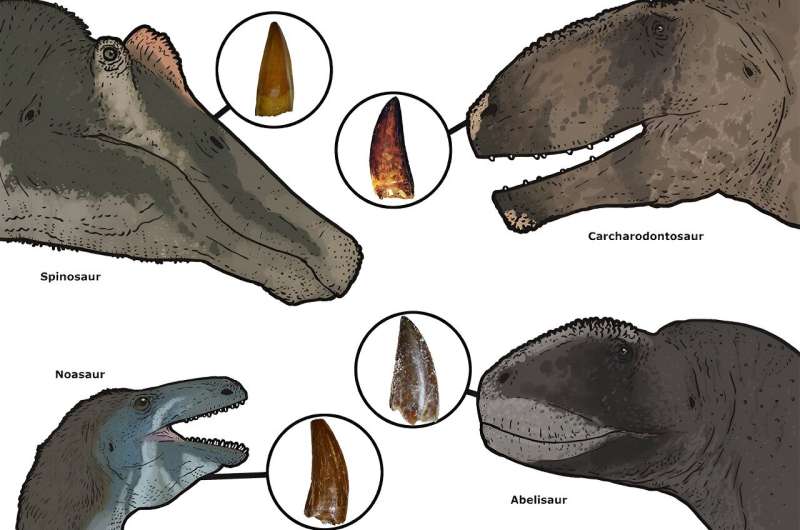In the sun-scorched deserts of Morocco lies a treasure trove of prehistoric wonders—the Kem Kem beds, a fossil-rich site dating back to the Cretaceous period, approximately 100 million years ago. Here, amidst the arid landscape, an international team of paleontologists has unearthed groundbreaking discoveries that are rewriting the history of carnivorous dinosaurs, shedding new light on the ancient ecosystems that once thrived in this region.
Led by researchers from Utrecht University, the Natural History Museum in London, and institutions across the globe, this collaborative effort has applied cutting-edge techniques to unravel the mysteries concealed within the fossilized remains of theropod dinosaurs—the fearsome carnivores that ruled the ancient world. Through a combination of traditional phylogenetic analysis, discriminant analysis, and machine learning, the team has uncovered a wealth of new insights into the diversity and composition of the Kem Kem ecosystem.
At the heart of these discoveries lies a collection of isolated teeth—remnants of long-extinct predators that once roamed the ancient landscape. Among these teeth are familiar specimens from iconic dinosaurs such as Spinosaurus and Carcharodontosaurus, immortalized in popular culture by blockbuster movies like the Jurassic Park franchise. But alongside these well-known predators lurked enigmatic “mystery teeth,” whose true identity has long eluded scientists.
Using innovative techniques, including machine learning algorithms, the research team embarked on a journey to identify these elusive specimens and unlock their secrets. What they uncovered was nothing short of extraordinary. Contrary to previous assumptions, the mystery teeth were not the cousins of Velociraptor, as once believed, but rather belonged to two distinct groups: Abelisauridae and Noasauridae—two lesser-known families of theropod dinosaurs with unique characteristics and evolutionary histories.
Dr. Femke Holwerda of Utrecht University remarks, “These teeth had been languishing in museum collections for decades, but with our new approach, we were able to breathe new life into them and unveil their true identities. The discovery of noasaurids in the Kem Kem beds is a testament to the power of collaboration and innovation in paleontological research.”
Noasaurids, characterized by their peculiar small size and elongated necks, represent a fascinating addition to the roster of carnivorous dinosaurs known from the Kem Kem beds. Despite their rarity in the fossil record, the application of novel techniques has enabled scientists to shed light on their presence in this ancient ecosystem—a discovery that opens new avenues for understanding the biodiversity and ecological dynamics of the region.
But the revelations do not end there. Through meticulous analysis and careful examination, the research team has uncovered evidence of a previously unknown level of carnivorous diversity within the Kem Kem ecosystem. From the towering giants like Spinosaurus to the diminutive predators like Noasauridae, the fossil record paints a vivid picture of a dynamic and thriving ecosystem shaped by the ebb and flow of ancient rivers and the relentless struggle for survival.
The Kem Kem beds, with their unique combination of geological features and fossil preservation, offer a rare glimpse into the distant past—a world teeming with life and dominated by carnivorous behemoths. As our understanding of this ancient ecosystem continues to evolve, so too does our appreciation for the interconnectedness of life and the ever-changing tapestry of Earth’s history.
As we peer through the lens of time, guided by the insights of modern science and fueled by the spirit of discovery, we uncover the secrets of the past and illuminate the path towards a deeper understanding of our planet’s rich and diverse heritage. In the desolate sands of Morocco’s Kem Kem beds, the legacy of the dinosaurs lives on, waiting to be unearthed and brought to light by the curious minds and intrepid explorers of the present day.
